This Bread Rolls is so soft and fluffy and it only takes half the time of making a regular dinner rolls. This is a 1 proofing bread rolls, a bread that you can definitely make when you do not have much time. But just because it is only 1 proofing doesn’t mean you are sacrificing the texture of the bread. This bread has a really soft and fluffy texture, it taste so good you can enjoy eating this on its own. But you know, if you have some butter to spare, then go grab them and treat yourself to a simple soft bread rolls. Guaranteed, this is going to get you compliments.
Bread is one thing that I make almost once a week. More than muffin, bread, scones or biscuits. I often make 1 batch of bread, sometimes sweet, sometimes savory and sometimes simple plain rolls that are perfect for anything. Although I have more time now than before (perks of working from home), sometimes I still find myself short of time to do all the things that I need to finish. So this is where this 1 proofing bread comes in the picture.

Why Does Dough Need to Rise Twice
I’ve made quite a lot of bread recipes, from all around dinner rolls, versatile sandwich bread, easy burgers buns, creamy brioche bread and beautiful cinnamon rolls. Most of these bread have something in common, they are all yeast bread that requires the dough to rest twice. It takes a lot of time, but for me it is really worth it. But why do we need to let the dough rise twice? There is a science behind all this and some confusing terminologies involved, so I will save us all that effort of remembering those words and get straight to the point. Juts remember two words, flavor and texture. Allowing the dough to rest twice produces better flavor, and chewier texture because it allows yeast more time to get to work. But this doesn’t mean the we cannot produce a soft and fluffy bread with just 1 proofing. There are variety of recipe now a days that do not require as much time as traditional bread, like this recipe that I am sharing with you. A 1 proofing/rise bread recipe that produces the ultimate soft and fluffy texture. You will be pleased to see how it looks like when you take it out from the oven. Even more, you will not be able to stop singing praise for yourself when you taste how good they are. Trust me, this 1 proofing bread rolls did not compromise any texture and flavor. It taste as good as twice proof bread, but with less time required to make it.
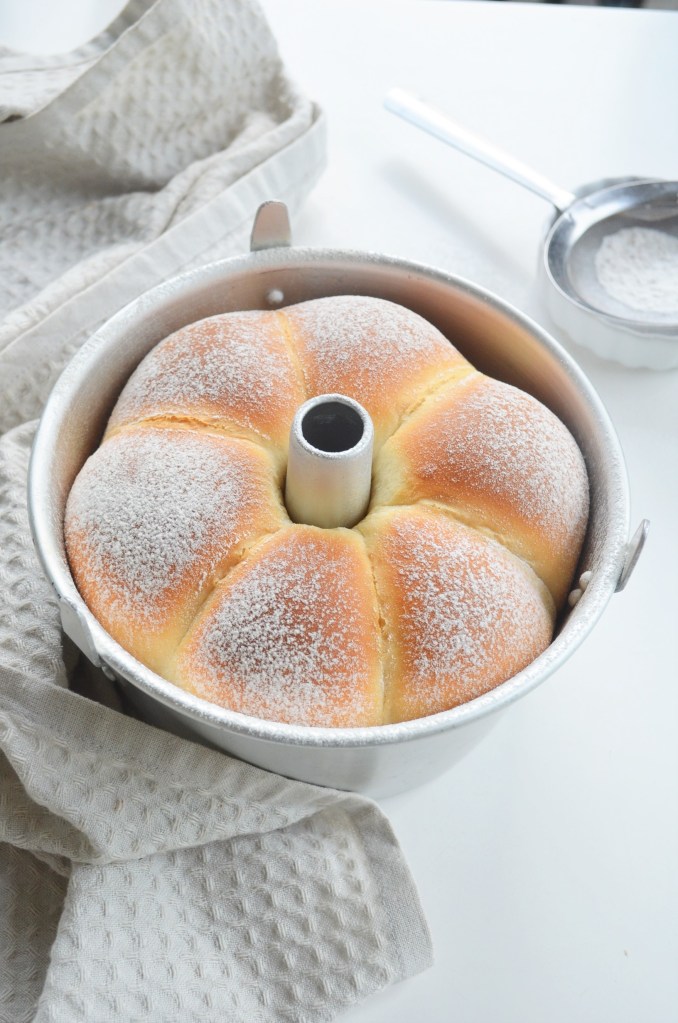
Taste as good as twice proof bread, but requires less time
I thought it would it hurt to experiment if I cut the resting time to 60 – 90 minutes instead of 120 minutes or 2 hours. I always noticed that after the first rest period, the dough seems to have rise well enough to make a good rolls. This is assuming of course that the state of the yeast is in perfect condition and the activation process was seamless and no issue at all. So I decided to give it a go and make a 1 proofing rolls. I was blown away with how I turned out! It was as good as the 2 proofing bread, it was so soft, so fluffy and so delicious! I cannot believe I am using delicious to describe this rolls. But they really taste so good even without any spread. I ate 1 roll without any spread right after I took the photo shoot. I am very excited to share this recipe with you. If you are having double thoughts in making homemade rolls at home, start with this recipe. It is so simple, and so easy to make. I have tips below in making homemade bread, be sure to scroll down and read it. These tips were from my actual bread making experience, so I can attest that it really works.
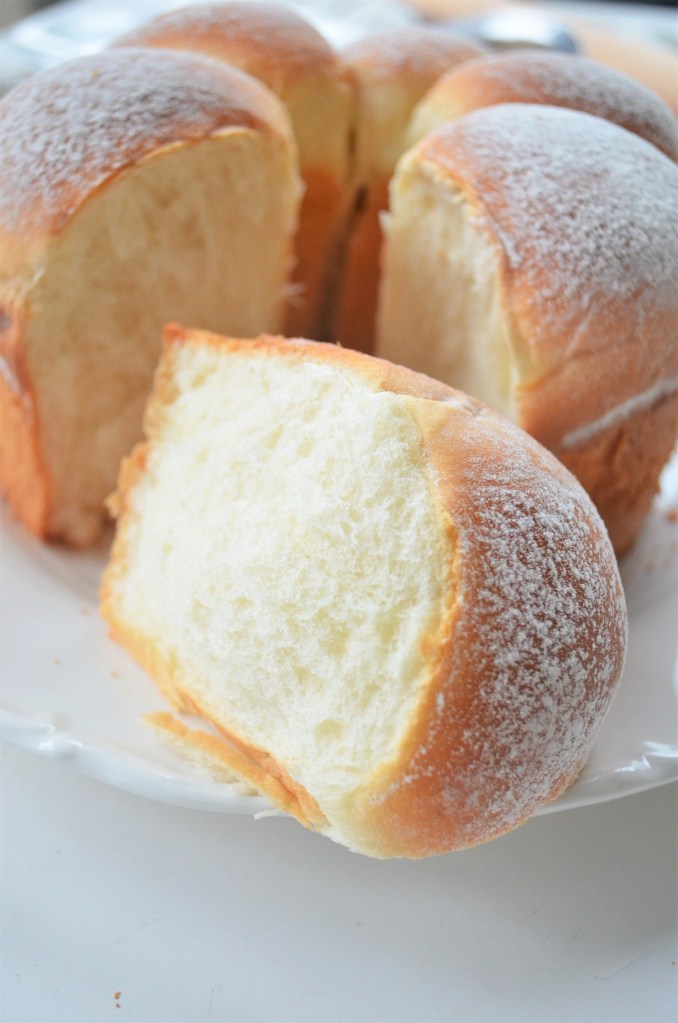
Tips for a Successful Soft Homemade Bread
- Liquid Temperature – Yeast grows in temperature between 105 – 110F, so its important to have the water that you are using to “proof” it in this range. If you go lower or higher, the yeast might not proof properly. That means the bread will not rise as much, resulting to a flat and tough bread.
- Check Yeast Expiry a Date – you might be wondering how come the bread did not rise when you followed exactly the recipe. Well, first thing first, make sure the yeast is not yet expired. Expired yeast is the common reason for flat and dense bread. If your bread did not expand or rise during the rest period, it is most likely that the yeast is not fresh or the water temperature is too hot or cold.
- Amount of Yeast – Just because you want a tall bread doesn’t mean you have to put as much yeast in the mixture. Sometimes adding too much yeast can cause the bread to collapse during the rest period. Just imagine putting more air than what is needed in a balloon, the balloon will explode. The same case with bread.
- Right Type of Yeast – We’ve discussed the 3 types of yeast above. Make sure to use the right one for your recipe, and make necessary adjustments if you want to swap one from another.
- Rest Period – Yeast bread needs time to rise. There are bread that uses less yeast but requires more rest time, the likes of No Knead Bread or Artisan Bread which usually require 8- 16 hours rest period to get the volume and to develop the flavor. There are 1 hour bread like my Rosemary Dinner Rolls like a 1 proofing only bread. The point is, give it time to rest, don’t touch it just leave it in a warm place. The first rest period will normally tell you if your dough is good or not. If it rise and almost double in size, then your on the right track.
- Expiration and Quality of the Flour – The quality of the flour greatly affect the texture of the bread. All-purpose flour could differ from country to country although they are all called as all-purpose flour. Sometimes it depends on the brand too. The closer the flour to expiration date or if it is already expired, the flour could tend to be drier, which means it would require more liquid than mentioned in the recipe. This is a common issue of way sometimes the dough tend to be tough and dry. This is why sometimes you have to add few more tablespoon from the suggested flour measurement to get the right texture. The dough should be soft, smooth and elastic. If it is too wet, add a bit more flour until it is no longer to sticky to handle. If it is too dry, a small amount of liquid helps provide moisture to the dough. A clean side of the bowl, with the dough slightly sticking at the bottom, a soft, smooth and elastic dough is what You are aiming for.

How do I Know if I Made the Bread Dough Correctly?
- Activating the Yeast – This is the first thing that you should get right, otherwise do NOT proceed. After 5 – 10 minutes you should see a foam forms on top of the water, this is an indication that the yeast is alive. If you do not get this, either the yeast is old or the liquid temperature is too hot or cold. The temperature should be 100F, lukewarm but not hot.
- Clean Bowl After Kneading – The sides of the bowl should be clean, while the bottom is slightly sticking to the dough. This means that amount of liquid to the flour is correct. Enough to make a clean bowl and still make a slightly wet dough.
- Soft Dough – Soft dough means the amount of flour to liquid is enough. Too much flour could make the bread dense and heavy, and too much liquid could make it too wet. Both will affect how the bread rise in the rest period. Try to push your fingers in the dough, it should leave a “dimple” on the dough and should gradually disappear.
- Smooth Dough Surface – Again, this is a sign of correct flour to liquid ratio. A “bumpy” surface could mean that the dough is dry and tough.
- Elastic Dough – A soft dough is usually elastic. If your dough is dry and tough, it wouldn’t be as elastic when you pull it apart.
- Rest Period – The dough should almost double in size. This is a sign that the activation of the yeast work which is crucial to making a soft and fluffy bread. This also means the yeast is alive (not yet expired) and the liquid temperature is correct. I always use baking thermometer to check the temperature of the liquid. The bread dough should be really puff up and should fill in the gaps between each bread. This is crucial and the final state of the bread before baking. If you are able to make it puff-up, that is a good sign that there are air trapped inside which will make the bread fluffy.
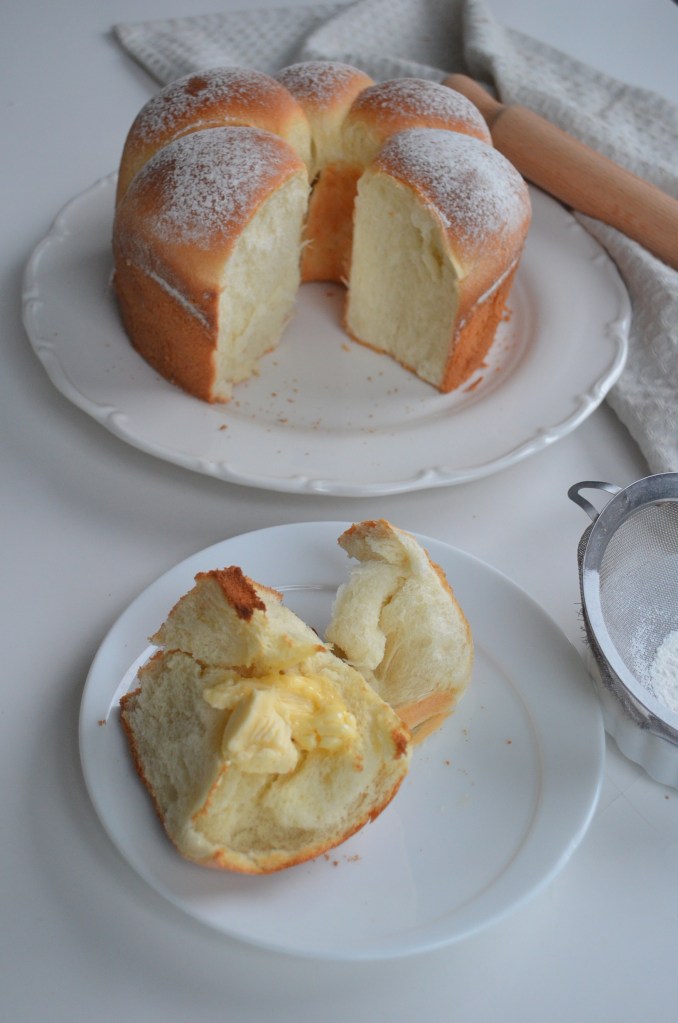
Why is My Dough too Wet or too Dry?
Don’t get frustrated if your dough did not turn out immediately as what you see in the photo or video. Most likely It is not because you did not follow the recipe. When it comes to bread making, the amount of flour and liquid is not always 100% precise. This is why often times you will encounter recipes that says, if your dough is dry, add a bit more liquid. If your dough is too wet, add a little bit more flour. This instructions are not meant to confuse you, they are meant to guide you on how to adjust as you work through your dough. The reason for this is that although the measurement of water and flour are specified in the recipe, it still could slightly vary depending on many factors. For instance, all-purpose flour could very from country to country, or even from brand to brand. Don’t be surprise if you find that some brand tends to require a bit more liquid as the others. On top of this, the amount of liquid is also affected by the state of your flour. How old is the flour that you are using? Older flour nearing expiry tends to be drier and this requires more liquid. Humidity also affects baking. The more humid it is, the more likely the dough will be sticky and wet. Bread making requires patience, and practice. Once you learn how to feel the right texture of the dough, everything will be quick and easy. You can instantly tell if you need to add more water or flour to get the dough in right state.
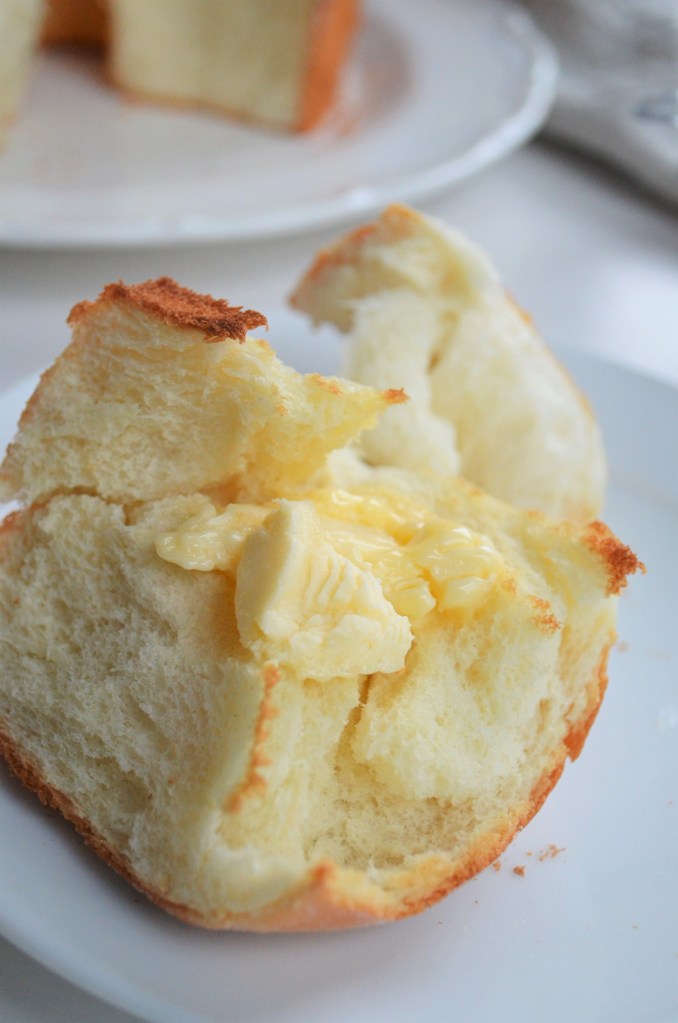
Let’s get rolling and make this 1 Proofing Soft and Fluffy Bread Rolls. Let me show you how I made it. Let’s get started!
Ingredients:
- 1/3 – 1/2 cup warm Full Fat Milk (110F) – microwave 15 seconds
- 3 tablespoon granulated Sugar (Divided: 1/2 teaspoon for the yeast, remaining for the flour)
- 1 1/4 teaspoon Active Dry Yeast or 1 teaspoon Instant Yeast
- 1 large Egg – room temperature
- 1 1/2 cups Bread Flour or All-Purpose Flour (plus 2 tablespoon ONLY as needed)
- 2/3 teaspoon Salt
- 2 tablespoon softened unsalted Butter
Instructions:
- Activate the Yeast: Microwave 1/3 cup of milk for 20- 25 seconds until lukewarm but NOT hot, aim for 110F. If you have a baking thermometer, use it as it is the best way to be sure of the temperature. Hot milk will kill the yeast and the bread will not rise properly. Transfer milk in bowl of stand mixer (Refer to discussion above for other Methods of making this) and add 1/2 tsp of the granulated sugar and stir. Add the yeast and let rest for 10 minutes until mixture is foamy. If the mixture did not become foamy, either the yeast is old or the milk is too hot. Do NOT proceed until corrected, otherwise you will end up with a tough dense bread
- If using instant yeast, mix the yeast with the dry ingredients. No need to activate it.
- Add Wet Ingredients: Add remaining sugar (3 tbsp) and egg to the yeast mixture.
- Add Dry Ingredients: Followed by the flour and salt.
- Knead the Dough (Speed 2) Using the paddle attachment, mix for about 30 seconds just to bring the mixture together. Replace with the dough/hook attachment and knead for 15 minutes (KitchenAid Speed 2). If the dough is too dry, add 1/2 teaspoon of milk from the reamining milk until it reach a smooth, soft and elastic texture. The side of the bowl should be clean, while the dough is slightly sticking to the bottom of the bowl.
- Add the softened butter and knead for another 15 minutes. When you add the butter, you will notice the dough will break apart and it will look like it is too wet. Do not panic, this is expected. Continue mixing (even if longer than 15 minutes) until the dough comes together completely (it will), the side of the bowl is clean and the dough is slightly sticking at the bottom of the bowl. Do not stop mixing until you get to this stage. It takes time to fully incorporate the butter to the flour mixture, be patient.
- To Check: The dough should be smooth, soft, elastic and slightly sticking to the bottom of the bowl
- Divide and Shape the Dough: Divide the dough into 6 portions, or up to 8 for smaller portions. Shape each portion into a ball. Arrange in the pan.
- You can use a 6-inch tube or round pan, or a 9-inch loaf pan
- or bake it individually in a baking tray.
- Let Rest: Cover loosely with plastic wrap or warm towel, and then let rise in a warm place for at least 60 minutes to 90 minutes, or until doubled. (Rising time is dependent on the temperature of the room; let rise until the dough is doubled). I find 60 – 75 minutes my sweet spot, perfectly fluffy.
- Trick: Pre-heat the oven to 110F then turn it OFF. Put the covered dough inside
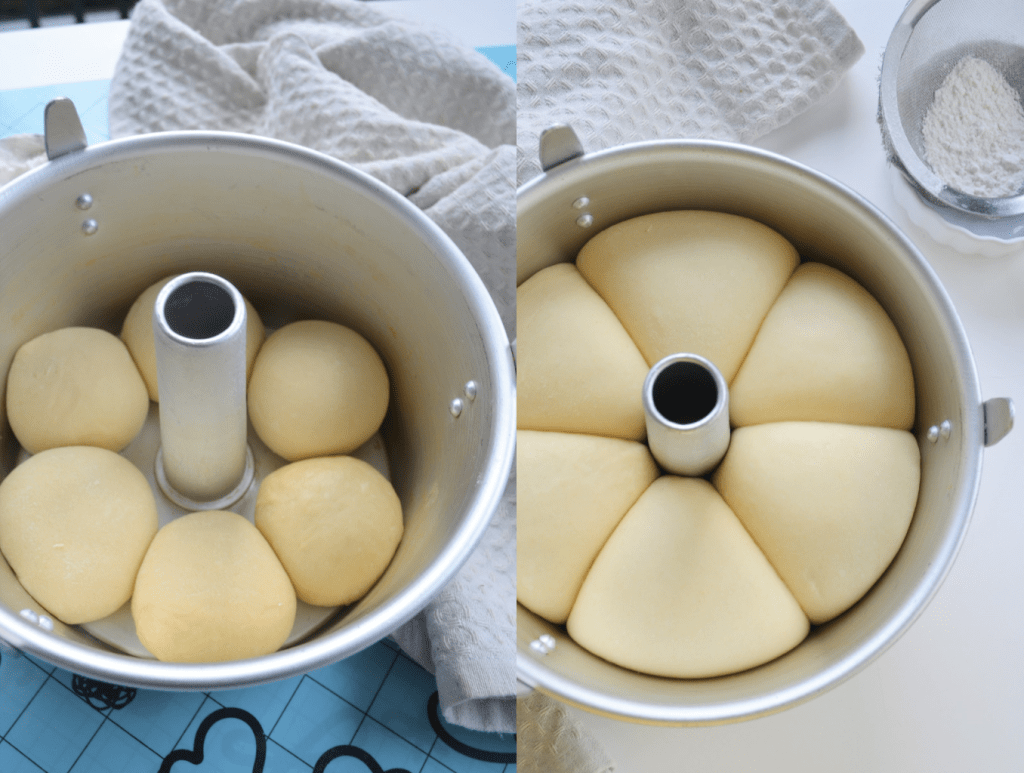
8. Pre-heat the Oven: Meanwhile, preheat the oven to 350F in the last 10 minutes of rest time, or however long it takes to pre-heat your oven. If you are using the oven to rest the dough, do NOT forget to take the dough out before pre-heating.
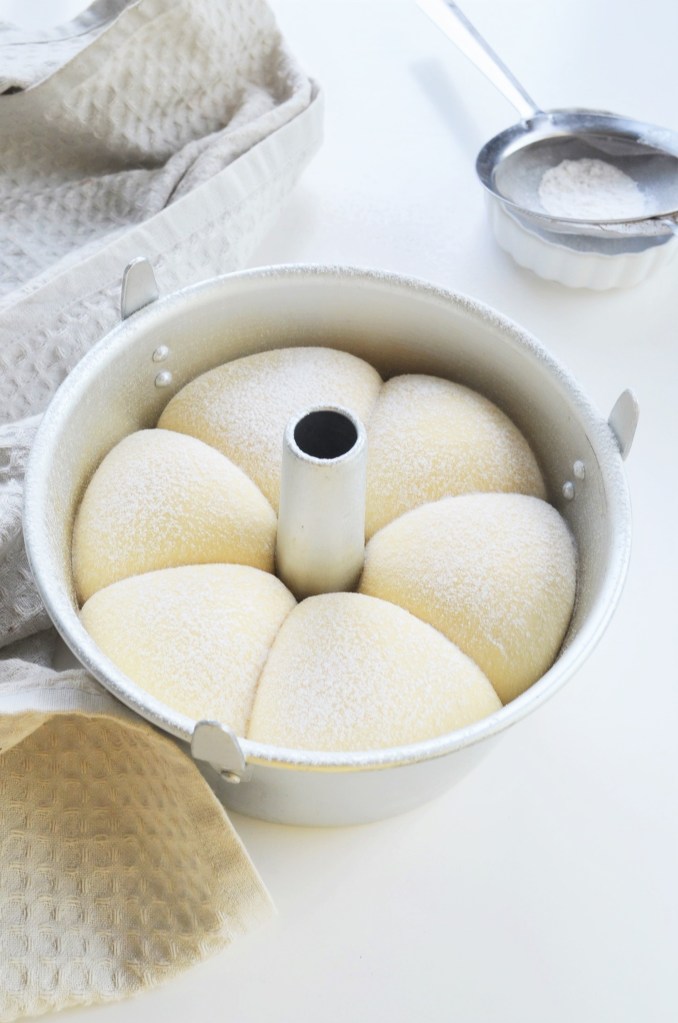
9. Dust the Top: Dust the top with flour or icing sugar. You can also use egg wash ( 1 beaten egg + 1 teaspoon water)
10. Bake for 20 – 25 minutes, until the top is golden brown.
11. Let Cool completely to allow the bread texture to get better
Makes 6 pieces
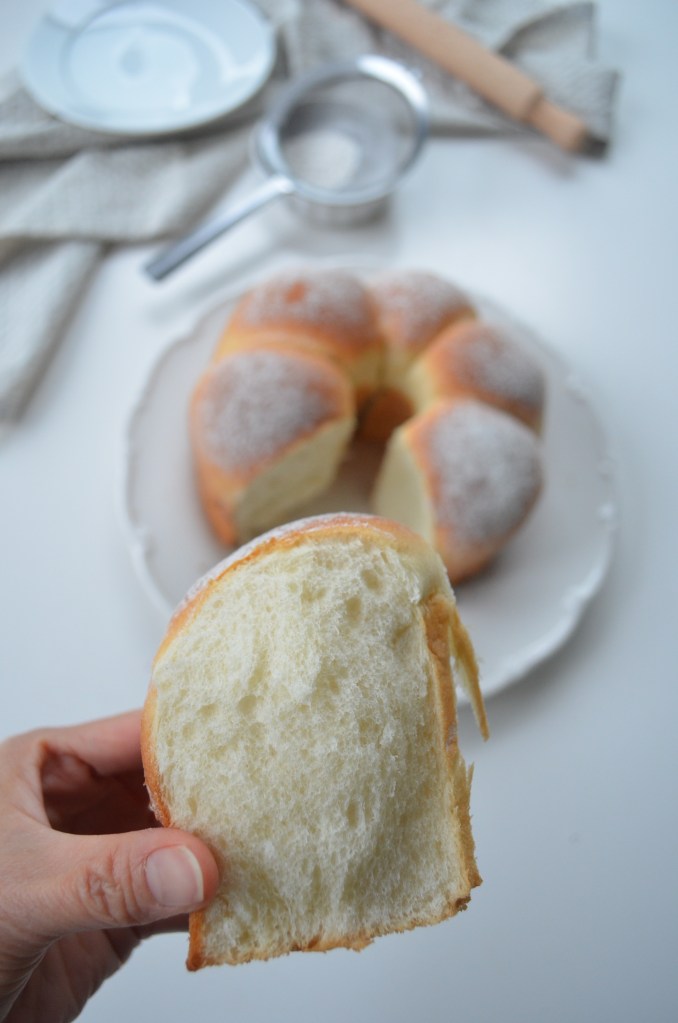
Enjoy! If you make this, share and tag me in Instagram #SweetNSpicyLiving. I would like to see your creations too.

Featured Posts:
- Small Batch Dinner Rolls for Two (Makes 4)
- Jalapeno and Cheese Pull-Apart Bread
- Kalamata Foccacia Bread
- Herbed Pull-Apart Jalapeno and Cream Cheese
- Brioche Hamburger Buns
- Vegan Dinner Rolls
- Ensaymada
- Coconut Twist Bread
- Zucchini and Cheddar Cheese Buttermilk Bread
- Parmesan Bread Rolls – Just 2 Pieces!
- No Yeast | No Mixer Sandwich Bread
- Sweet Potato Rolls
- [Video] 10 Homemade Bread Recipe Videos


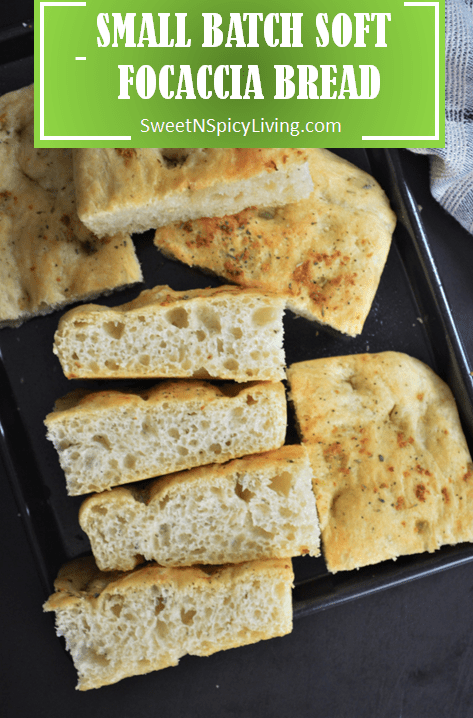


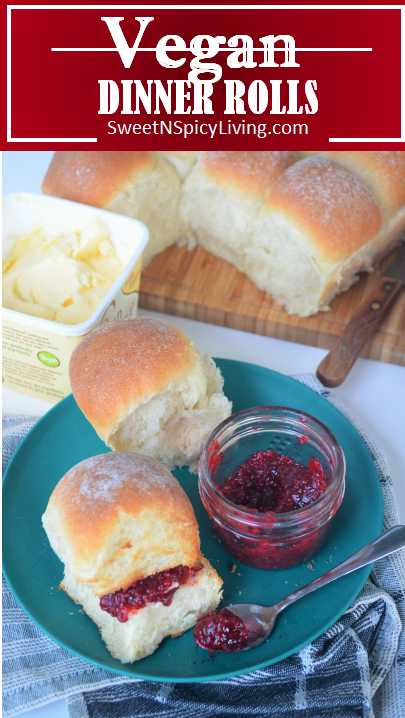


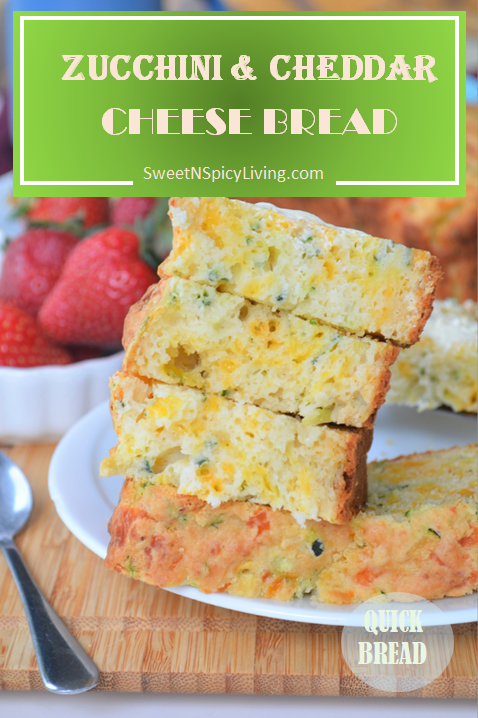




My Latest Video
Thank You for visiting my website. Please don’t forget to click the “Like” button below if you like this recipe. Lastly, did you know that I have a YouTube Channel? Please support my channel by clicking on the “Subscribe” button in my video and the “Bell” icon to get notification of new videos.

FOLLOW SWEETNSPICYLIVING ON SOCIAL MEDIA
Facebook | Instagram | Pinterest | Twitter | YouTube
Categories: Baking, Breads, Recipe, Small Batch Recipes, Video, Video Recipes
